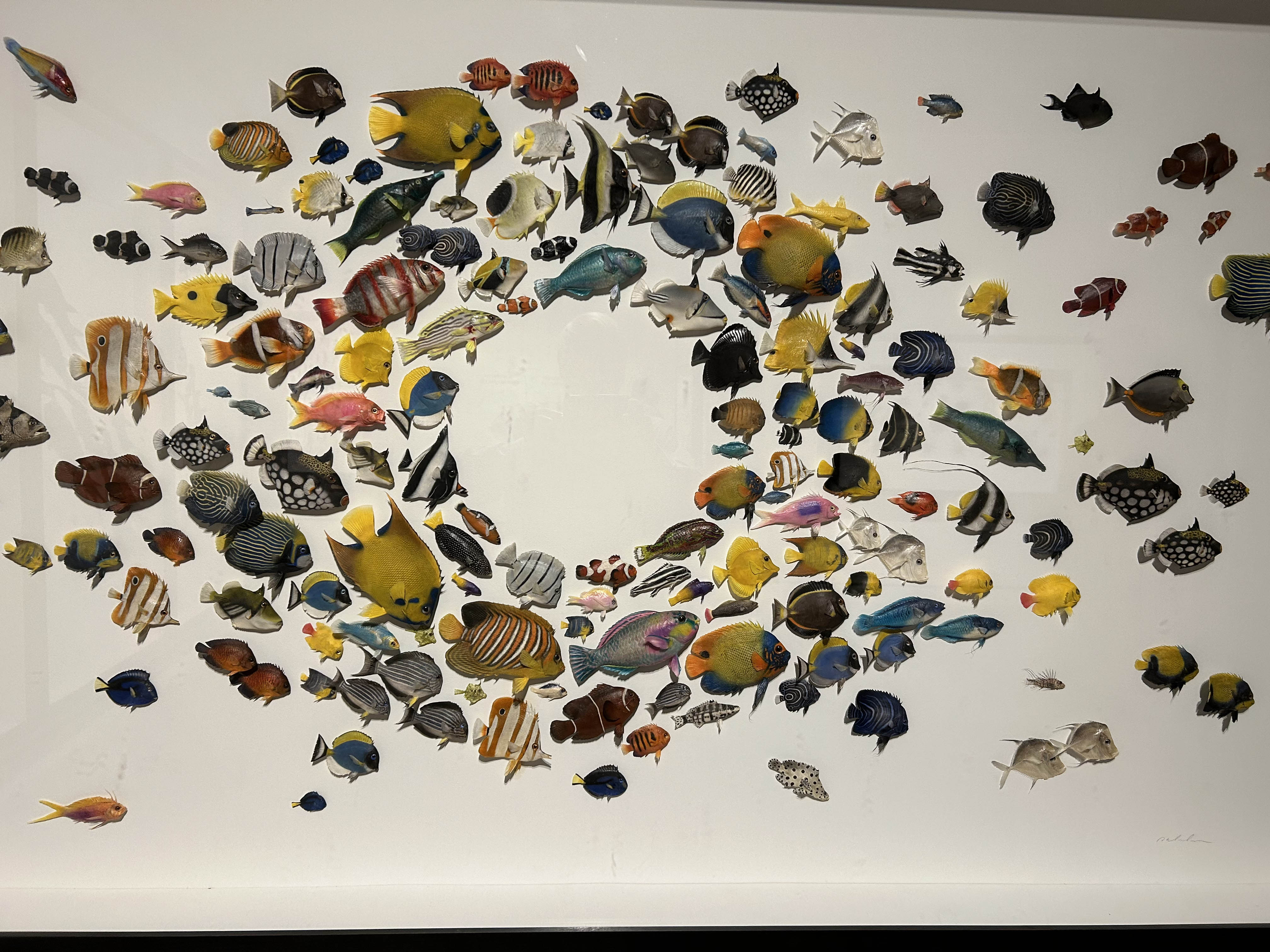Exquisite Creatures; thoughts on the intersection of art and nature
Contact
University of Arkansas System Division of Agriculture
Cooperative Extension Service
2301 S. University Ave.
Little Rock, AR 72204

Exquisite Creatures; thoughts on the intersection of art and nature
Recently a friend and I made our way to Bentonville to see the Exquisite Creatures exhibit at Crystal Bridges Museum of American Art. We were blown away. Having made nearly all of the special exhibitions at that world-class art museum over the last dozen years, this was the most stunningly beautiful showing I have seen. Yet, despite all the beauty, I came away with a slight feeling of disquiet.
The Exquisite Creatures exhibition is the work of Oregon artist Christopher Marley whose artistic pallet is nature. Not a depiction of nature in oil paintings or photography, but artistic arrangements of preserved creatures displayed in white-on-white shadow boxes with black frames. With an artist’s eye, Marley arranges these creatures in geometric patterns to display their natural beauty. He started exploring this unique avenue of art twenty years ago with brightly colored beetles and has since branched out to include vertebrates such as birds, lizards, snakes and tropical fishes.
Writing this, it sounds kind of creepy. But it is not at all. His is not traditional taxidermy that replaces the skeleton of an animal with an interior armature; instead, he freeze-dries the specimens to preserve them in their natural form and beauty. Then the specimens are artistically arranged – sometimes with similar or related species and sometimes with wildly contrasting life forms – to create his exquisite displays. Interestingly, Marley’s name is not displayed on the individual works. I suspect this is a nod of acceptance that the beauty on display is nature’s creation, not by his own hand. His work is a secondary one of arranging the specimens in a pleasing manner.
Since 2017 his traveling exhibition has been displayed around the country and in England. The tagline of this exhibition is “a dialogue with art, nature and science,” a depiction that fits well with the overarching mission of Crystal Bridges. It is a must-see exhibit for school groups and is a big hit with families.
My disquiet came from seeing all those once-living creatures splayed out on the walls of an art museum. Marley sources his material from all over the world. The insects are sustainably harvested by indigenous people throughout the tropical world. On his website, he states that the payment of natives for their harvest of insects helps preserve their way of life. Harvesting insects to sell to rich foreigners is but another form of resource extraction and is undoubtedly less destructive than cutting down the forests to plant palm oil trees.
He says he never kills any of the vertebrates. Most are supplied by zoos and specialist collectors who have animals die all the time. These dead animals often end up in a deep freeze, awaiting final disposition. Marley provides a way of resurrecting these creatures from their icy tomb to something approaching their former state of beauty. The beautiful display of pastel parakeets is possibly from his father, a lifelong parakeet breeder. Marley recounts in an interview that he grew up thinking all families had dead birds in plastic bags next to the ice cream.
In a way, Marley’s work harkens back to that of previous generations of naturalists such as John Tradescant’s Cabinet of Curiosities, the first museum opened to the public in 17th century England. As he and his son traveled the world, they brought back all manner of things new to them for display in their museum. These displays were the predecessors of today’s natural history museums, but these institutions always focused on nature and science. Art was not in the mix.
When I think of art and nature, my mind automatically goes to John James Audubon and his Birds of America which was published in stages between 1827 and 1838. In it, he depicted 435 life-size watercolors of American birds. Reading his biographies it is clear that Audabon’s interaction with nature often involved shot-gunning dozens of birds to get specimens for his paintings.
The Exquisite Creatures exhibition runs through the end of July and is worth seeing. It will not disappoint. I only hope that this kind of artistry remains a unique, one-of-a-kind proposition, and doesn’t go mainstream. In the late 19th century, the demand for bird feathers in women’s hats almost decimated the bird population in Florida swamps and ultimately led to legislation protecting migratory birds. Hopefully, there will not be a great surge in demand for freeze-dried snakes to adorn our living room walls.
